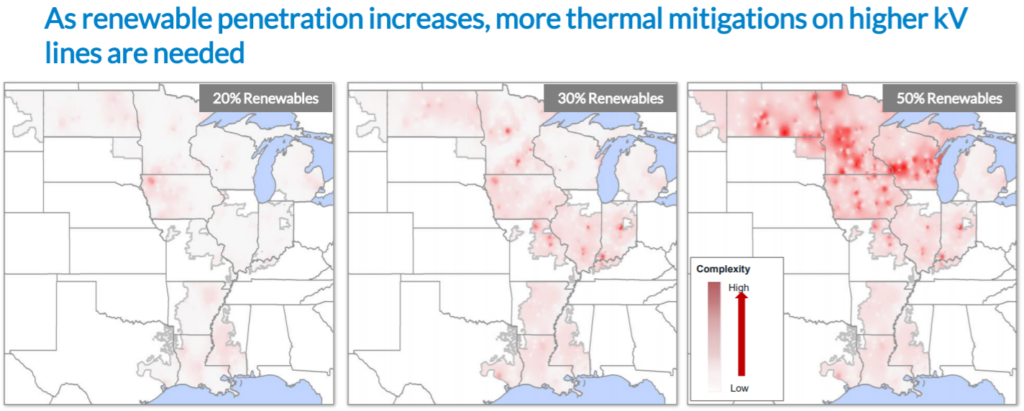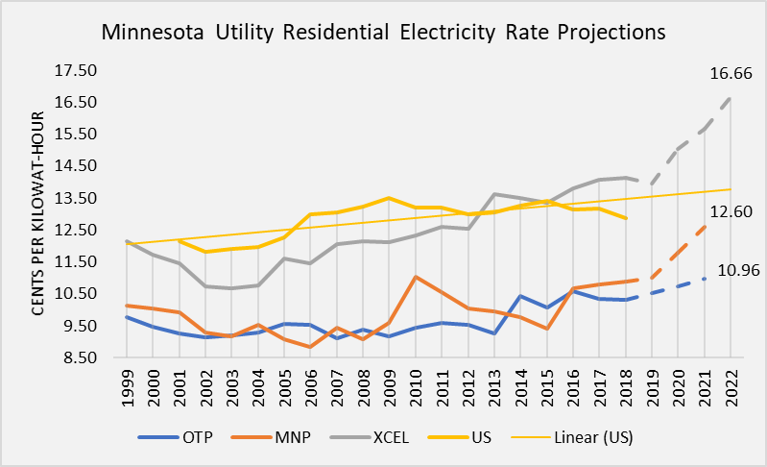Reality, physics emerge as greatest obstacles to renewable growth
Renewable energy rent seekers like to make it seem like history is on their side, and that there is simply an inevitable and glorious march toward wind, solar, and battery storage technology. It appears two pesky characters, reality and physics, are showing up to spoil the party.
One of the many problems with wind and solar is that they are widely dispersed, and these facilities are often located far away from the population centers that will use the electricity generated from them. As a result, extensive and expensive transmission systems must be built to accommodate these weather-dependent resources, but it appears the current transmission grid is so full, adding any more renewable projects will be cost prohibitive.
According to an article in E&E News, transmission congestion threatens to dramatically slow renewable energy development as high transmission upgrade costs have forced developers to pull projects out of the Midcontinent Independent Systems Operator (MISO) interconnection queue.
“Of 5,000 megawatts of wind and solar projects in MISO’s western region that were part of a group being studied for interconnection, all but 250 MW had withdrawn as of Dec. 1, according to the alliance. And it’s unlikely those projects will move forward because they would require $100 million in transmission upgrades, the group said.”
It’s interesting that we’re already hitting a wall for transmission considering the state of Minnesota has recently spent more than $2 billion on Capx2020 just two years ago, and the Midcontinent Independent Systems Operator is in the final stages of completing a $6.6 billion “multi-value” build out across multiple states.
The need for even more transmission to be built will make most wind and solar projects in the queue impossibly unprofitable:
“The group of projects included Southern Power’s 200-MW Ruso wind farm in North Dakota. The company withdrew from the MISO queue after an engineering study showed the project, estimated to cost $250 million, would require $500 million in transmission upgrades.”
This means the cost of connecting to the grid is twice as high as the project itself. If you ever needed a clear sign that wind and solar could never make sense in a free market, this would be it. However, our old friends at Fresh Energy are being intellectually honest for a change and transparently advocating for a serious expansion of our transmission system to allow for more wind and solar to be integrated into the grid.
It’s not surprising that Fresh Energy wants to stick Minnesota families and businesses with the cost of renewable-enabling transmission projects, but if renewable energy firms can’t pay their own way in terms of transmission, it simply demonstrates that their technology is inferior to other sources of electricity like coal, natural gas and nuclear power.
This sentiment is backed up by the figure below from MISO, which shows that the amount of transmission problems that occur increases substantially as more and more weather-dependent renewables are added to the grid. It’s important to note that we didn’t need all of this extra transmission when were relying upon affordable, reliable sources of electricity that are not dependent upon the cooperation of the weather.

The need for costly transmission should be a signal that renewables simply aren’t the technology of the future, but according to a Star Tribune article, Xcel Energy wants to spend $11.5 billion on its distribution and transmission system over the next several years to facilitate its closure of its coal plants, and its plans to build more wind and solar.
Spending $11.5 billion on transmission and distribution systems will make the $466 million spending spree Xcel recently proposed look like peanuts. The recent proposed increase in spending would increase electricity rates for Minnesota families in Xcel’s service territory by 17.8 percent, as you can see in the graph below. This rate increase cause Minnesota families to pay an extra $169 to $200 per year.

Unfortunately, I have little confidence that Xcel will do the right thing by their ratepayers and scrap all of these expensive renewable energy and transmission projects. I also have little confidence in the Minnesota Public Utilities Commission or the Minnesota Department of Commerce to actually scrutinize these proposals and protect ratepayers from Xcel’s profit-seeking.
The only thing that will actually scare Xcel into doing the right thing is the fear of losing customers, which is currently prohibited under state law. This needs to change. Otherwise, Minnesota families and businesses will be forced to pay ever-increasing electric costs by a government-approved monopoly utility and a complicit state government.